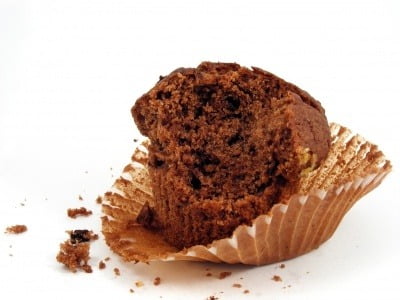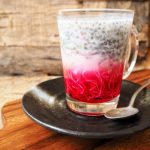
Muffins, by definition are small domes spongy cakes or bread made with egg and usually eaten at breakfast. They are certainly not cupcakes! The name comes from the Low German muffen.
A muffin is a complex mixture of interacting ingredients. A typical muffin recipe will include a high level of sugar and variable levels of fat, flour, eggs, and baking powder. Most manufactured muffins will also include preservatives, emulsifiers and milk powder.
Muffins and indeed most cakes are characterized by a typical porous structure and high volume.
Improving the Shelf-Life of Muffins
As with all baked goods, they undergo a process of staling which makes them unacceptable for the consumer. In this case it is hardening and a drying texture which makes them leathery, as moisture leaves the product. To reduce staling various preservatives and humectants have been added such as lecithins, their derivatives such as the mono- and diglycerides, and the esters, stearyl tartrate, sodium and calcium stearoyl-2-lactylate. Loss of shelf-life also comes from fat becoming rancid.
Starches and other dietary fibres have been tried and tested, and found value in prolonging shelf-life. Duwx starch (Furesik, 1992) has been patented for inclusion in a variety of baked goods to help with shelf-life improvement. In fact, dietary fibre is a popular component to include to improve the nutritional credentials of such products e.g. peach dietary fibre upto 10%w/w was used to reduce the fat in muffins (Grigelmo-Miguel et al., 1999; 2001). Apple skin fibre (Rupasinghe et al., 2008), cocoa fibre for chocolate muffins (Martinez-Cervera et al., 2011), potato peels (Arora and Camire, 1994), cellulose and other cereal brans have also been incorporated with improved shelf-life but altered organoleptic properties.
The use of dietary fibre to extend shelf-life is perfectly feasible but requires careful investigation. FoodWrite has been working with a local baker to test a variety of commercially available fibres for this very purpose and produce different sensory properties. Some of this work is now available for others to exploit.
References
Arora, A., Camire, M.E. (1994) Performance of potato peels in muffins and cookies. Food Res. Int. 27(1) pp. 15-22
Furesik, S. (1992) Process for improving the shelf life of baked goods. Assigned to American Maize-Products Co., US patent 5,147,665 Date: Sep. 15, 1992
Grigelmo-Miguel, N., Carreras-Boladeras, E., Martin-Belloso, O. (1999) Development of high-fruit-dietary-fibre muffins. Eur. Food Res. Technol. 210 pp. 123-128
Grigelmo-Miguel, N., Carreras-Boladeras, E., Martin-Belloso, O. (2001) Influence of the Addition of Peach Dietary Fiber in Composition, Physical Properties and Acceptability of Reduced-Fat Muffins. Food Sci. Technol. Int. 7(5) pp. 425-431
Martínez-Cervera, S., Salvador, A., Muguerza, B., Moulay, L., & Fiszman, S.M. (2011). Cocoa fibre and its application as a fat replacer in chocolate muffins. LWT—Food Science andTechnology, 44, pp. 729–736.
Rupasinghe, H.P.V., Wang, L., Huber, G.M., Pitts, N.L. (2008) Effect of baking on dietary fibre and phenolics of muffins incorporated with apple skin powder. Food Chem. 107 pp.1217–24.


Leave a Reply